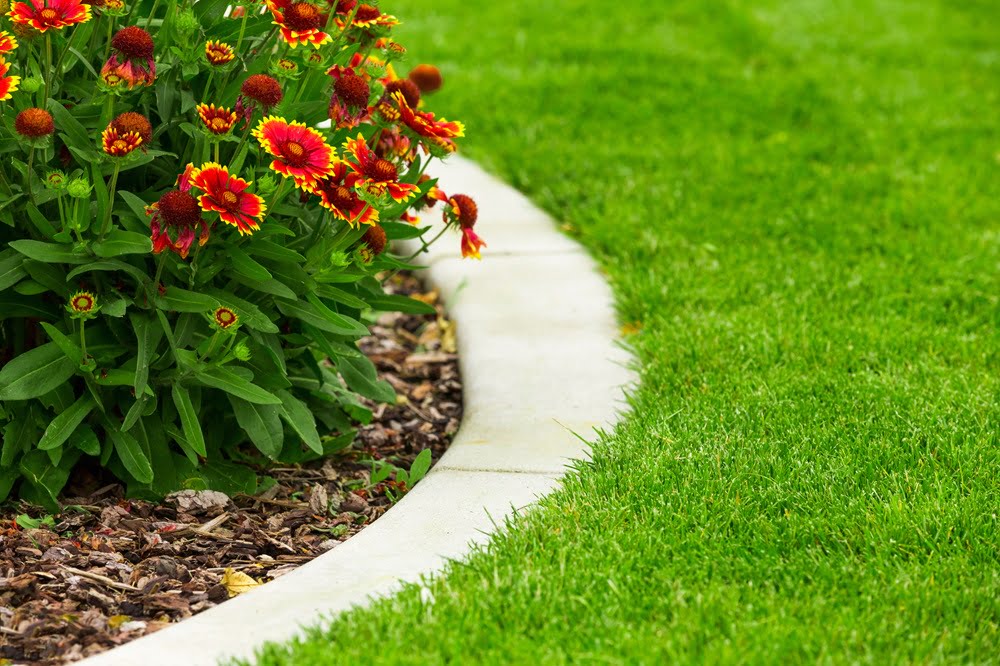
One of the most important aspects of planning a garden is the decision, how to make a border in the garden. Garden edgings serve not only as an attractive compliment to the plants and architecture of the garden, but also have practical functions such as keeping things tidy, preventing erosion and protecting plants from damage by pests. Garden edgings are available in a variety of styles and materials, so you are sure to find the right one for you.
It is well worth investing time and energy in creating robust garden edging. Why? They add structure and harmony to the garden layout, creating natural lines that lead the eye from one element to the next. Are there different types of edging? Of course! You can choose from metal, plastic, wooden and concrete garden edging. Whatever your style and budget, there is a suitable option for your garden. Knowledge, how to make a border in the garden, opens the door to enormous creativity while increasing the functionality and sustainability of your green paradise.
The first step towards creating a striking garden edging is solid planning. Before you find out, how to do edging in the gardenYou need to think about several aspects. The first is the choice of materials. As mentioned earlier, edging can be made from a variety of materials — from metal to plastic to wood and concrete. The choice depends on your budget, the style of your garden and what function you want the edging to serve.
Another important planning stage is the selection of tools. You will need tools such as a shovel, tape measure, hammer and spirit level. Also, don’t forget to consider the style of the garden. Edging should compliment and enhance its character — from simple, minimalist edges for modern gardens to distinctive edges for rustic gardens. Detailed consideration, how to make a border, will help you gain not only knowledge, but also inspiration on how best to develop your garden space.
The choice of materials plays a key role in deciding on this, how to do edging in the garden. Each material has its own unique properties that affect the final appearance and durability of the edging. Garden edging made of metal is particularly popular because of its durability and versatility. Metals such as steel and aluminium are resistant to rust and can easily withstand changing weather conditions.
Another common choice is plastic edging (preferably the recycled kind), which is lightweight, easy to install and available in a wide range of colours. Wooden garden edging, on the other hand, adds natural charm and warmth, but may require extra maintenance to keep it in good condition, and is less durable. Concrete edging provides unparalleled durability and strength, but can be more difficult to install. Considering these aspects will help you understand which garden edging will be most suitable for your green corner.
Preparing the area for edging in the garden is a key step to ensure their durability and aesthetic appearance. The first step is to thoroughly clear the designated line of grass, weeds and other vegetation, which can be done with a spade or a special tool for removing grass. The area should then be carefully levelled using a rake and a spirit level, which is essential to ensure the stability of the edging. It is also important to pay attention to drainage — in areas prone to water accumulation, consider using a layer of gravel or sand to help drain excess water and prevent rotting of the wooden edging. It is also good practice to mark out the lines of the edging with string, allowing you to fine-tune its shape to fit the garden plan. Attention to these details at the site preparation stage translates into an end result that will please the eye for years to come.
The first step is to mark out the line of the edging. As we mentioned above, it is best to use a string attached on two sides to the pins. This will help you get a better idea of what the final design will look like. Then, proceed to make a trench of the appropriate depth, which depends on the edging you have chosen. When the trench is ready, you need to lay the edging accordingly. At this stage, it is important that each successive segment is firmly set and level. If you choose plastic edging, fix it with anchors to the ground. The final step is to fill in the excavation with soil, and then to compact it thoroughly. This procedure will allow you to achieve stable and long-lasting edging that will last in your garden for many years.
Despite best efforts, how to make a border in the garden, we may encounter some difficulties. One of the most common mistakes when creating garden edging is improper soil preparation. To avoid this mistake, always make sure the soil is well drained and stable enough to hold the edging in place. Also remove any obstacles like weeds and stones. Another common mistake is not planning properly. It’s always worth spending some time understanding what garden edging is most suitable for your garden and what shape you want to set. If you care about curves and undulating shapes, plastic edging that can be easily moulded is a good choice. They are also a good choice if you appreciate a minimalist look.
Working on edging can sometimes be complicated, so remember to always have the right tools and materials for the job, and enough time to go through the process to do it carefully. A final common mistake is not paying attention to detail. Edging should be well level and evenly placed to ensure aesthetics and functionality. Like so make an edge? The most important thing is proper planning and diligence.